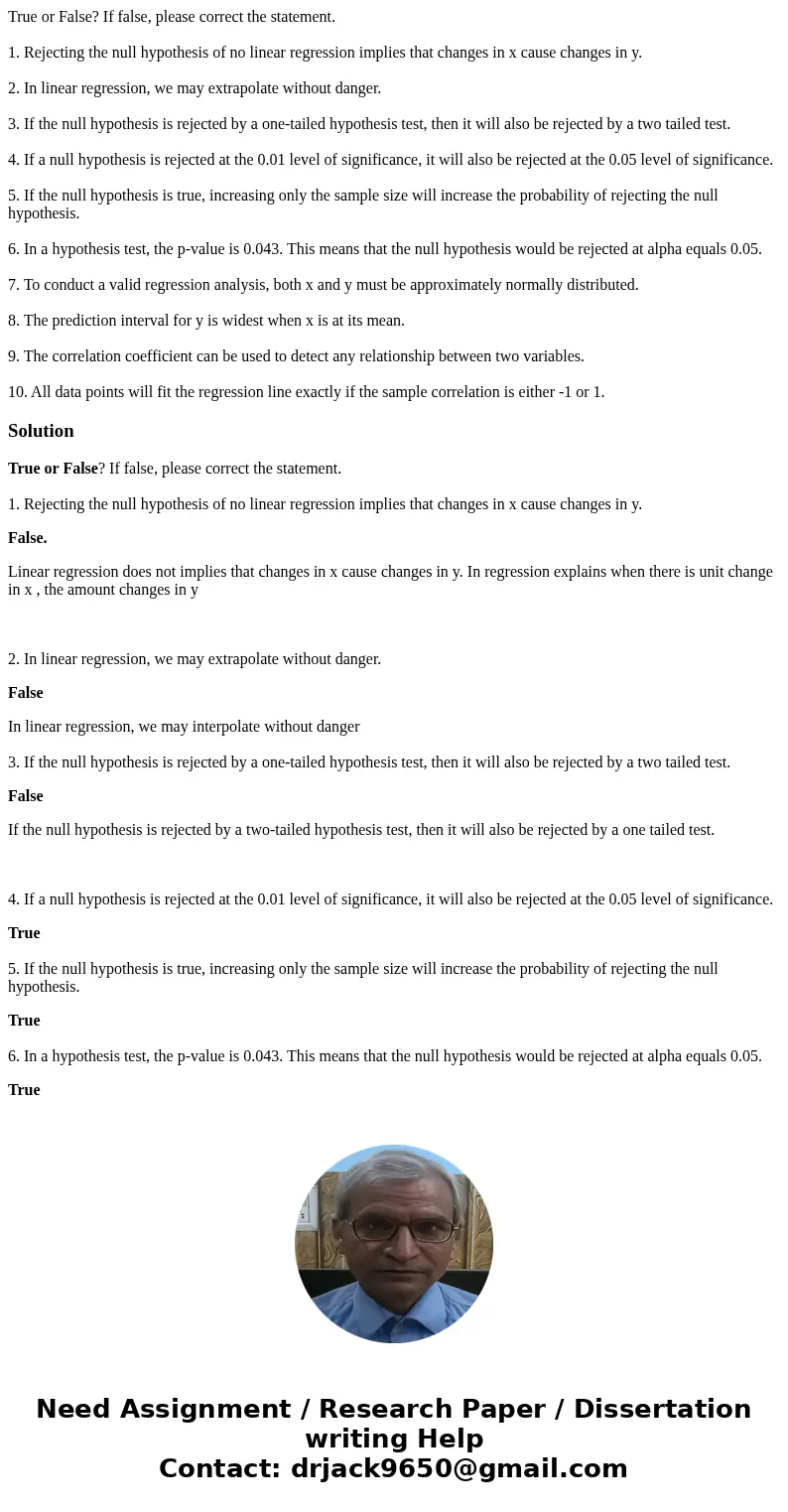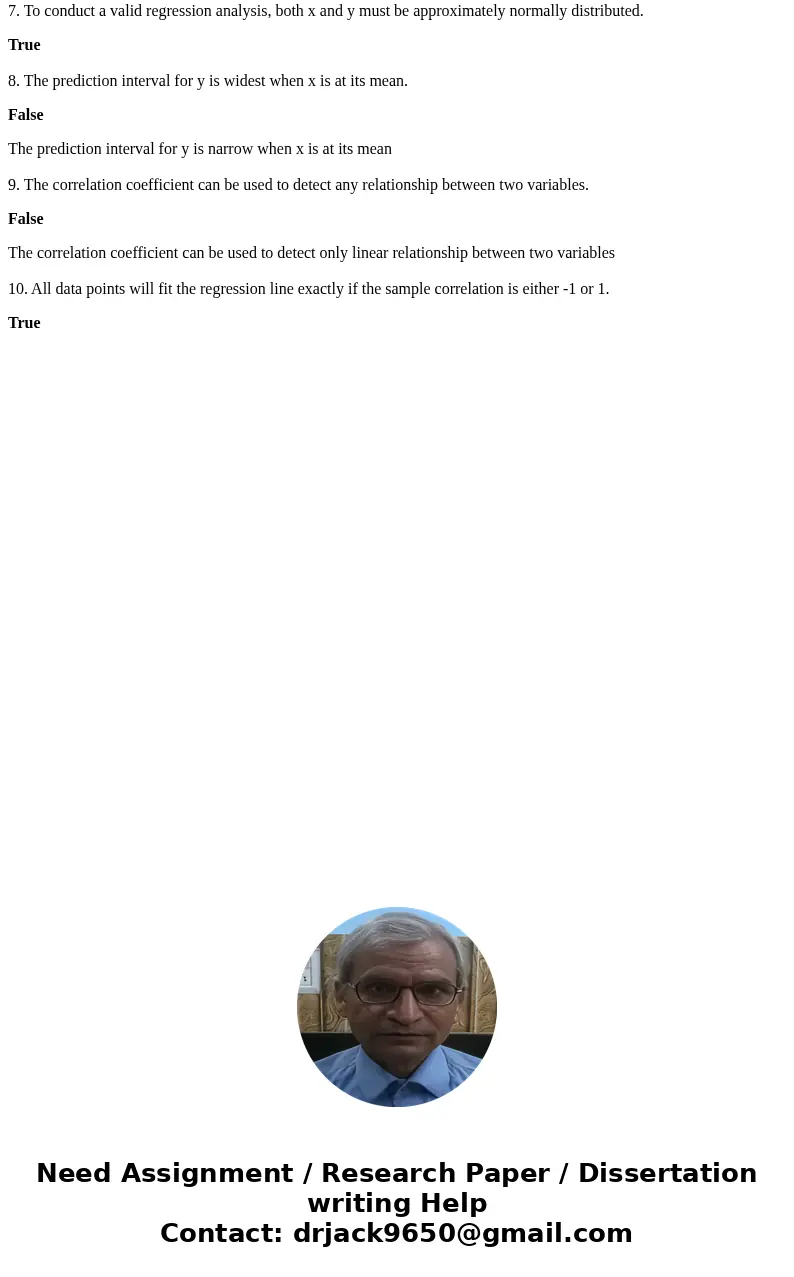True or False If false please correct the statement 1 Reject
True or False? If false, please correct the statement.
1. Rejecting the null hypothesis of no linear regression implies that changes in x cause changes in y.
2. In linear regression, we may extrapolate without danger.
3. If the null hypothesis is rejected by a one-tailed hypothesis test, then it will also be rejected by a two tailed test.
4. If a null hypothesis is rejected at the 0.01 level of significance, it will also be rejected at the 0.05 level of significance.
5. If the null hypothesis is true, increasing only the sample size will increase the probability of rejecting the null hypothesis.
6. In a hypothesis test, the p-value is 0.043. This means that the null hypothesis would be rejected at alpha equals 0.05.
7. To conduct a valid regression analysis, both x and y must be approximately normally distributed.
8. The prediction interval for y is widest when x is at its mean.
9. The correlation coefficient can be used to detect any relationship between two variables.
10. All data points will fit the regression line exactly if the sample correlation is either -1 or 1.
Solution
True or False? If false, please correct the statement.
1. Rejecting the null hypothesis of no linear regression implies that changes in x cause changes in y.
False.
Linear regression does not implies that changes in x cause changes in y. In regression explains when there is unit change in x , the amount changes in y
2. In linear regression, we may extrapolate without danger.
False
In linear regression, we may interpolate without danger
3. If the null hypothesis is rejected by a one-tailed hypothesis test, then it will also be rejected by a two tailed test.
False
If the null hypothesis is rejected by a two-tailed hypothesis test, then it will also be rejected by a one tailed test.
4. If a null hypothesis is rejected at the 0.01 level of significance, it will also be rejected at the 0.05 level of significance.
True
5. If the null hypothesis is true, increasing only the sample size will increase the probability of rejecting the null hypothesis.
True
6. In a hypothesis test, the p-value is 0.043. This means that the null hypothesis would be rejected at alpha equals 0.05.
True
7. To conduct a valid regression analysis, both x and y must be approximately normally distributed.
True
8. The prediction interval for y is widest when x is at its mean.
False
The prediction interval for y is narrow when x is at its mean
9. The correlation coefficient can be used to detect any relationship between two variables.
False
The correlation coefficient can be used to detect only linear relationship between two variables
10. All data points will fit the regression line exactly if the sample correlation is either -1 or 1.
True


 Homework Sourse
Homework Sourse